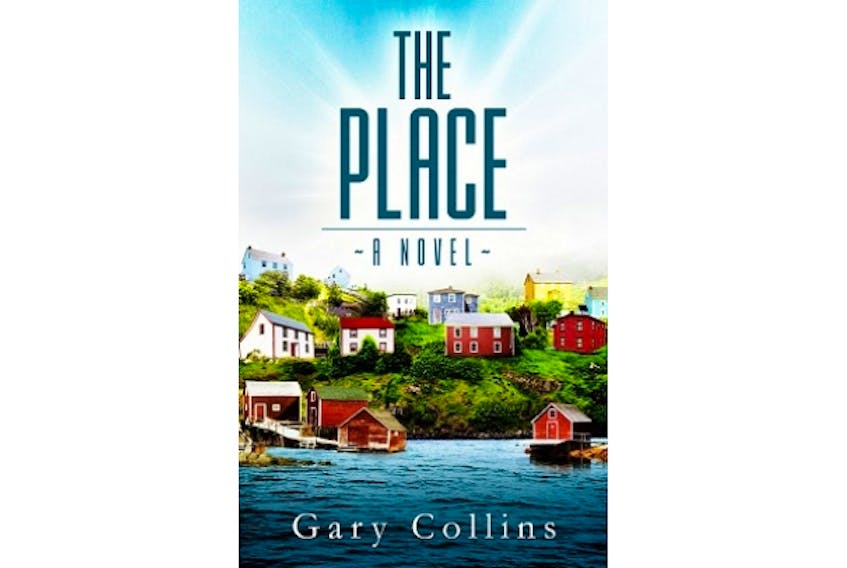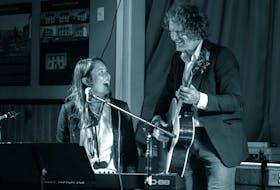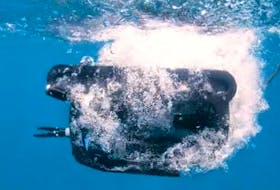“The Place” is author Gary Collins’ followup, or counterpart novel to “The Crackie,” with new characters interacting with a reoccurring cast from the previous book. In a further overlap with some of his other writing, everyone is deeply affected or influenced by seminal moments in Newfoundland and Labrador 20th-century history that Collins has also referenced in other publications: here, most notably, the SS Newfoundland sealing disaster of 1914, and the Newfoundland Regiment’s engagement at Gallipoli in 1915.

The perspective switches between three main characters: “The Catholic” (Michael Kelly), Rebecca/Becky (mother of Jake, “The Crackie”), and Jack/Redjack (a culler, the merchant’s agent/surrogate who determines the grade of the fish, loathed by all, including himself). Jake, the central character of the previous book, is a pivotal figure seen through each of their eyes, but he himself doesn’t directly address the reader.
The book opens on July 12th, 1891, Orangeman’s Day, with the Orange Order leading a ritual yet punishing (for the horses at least) parade in homage of the Battle of the Boyne “in this small outport fishing village on the northeast coast of Newfoundland.” Michael, 14, hidden in the woods, headed for a tryst with Ruth, his true love (and a Protestant), witnesses all and, more than most engaged in the ceremony, fathoms its historic roots. That battle of 200 years ago still resonates, and although his neighbouring Protestant and Catholic communities aren’t poised with swords drawn, they are at odds enough that Michael and Ruth’s relationship is taboo. But the young lovers are drawn together, as much by a shared intellectual curiosity as physical attraction, and even threats of outright violence won’t part them.
Becky enters the tale as a middle-aged woman, bitter and reclusive. “I don’t remember anyone ever loving me” is the first thought she shares with us. Even worse — at least by the standards she uses to judge herself — she neither loved her husband, Tobias, nor her son, Jake. Tobias was a big, strong man and a good worker, “the best splitter in the Place.” But he’s also unkind, with a vicious temper, his boy its most frequent target, and Becky does nothing to shield him. She feels no affection for her only child, a situation she feels powerless to change, even as she observes how damaging it is to both of them.
Michael and Jake come together in the trenches of the Dardanelles. The campaign to gain access to the Black Sea is, famously, a failure, with both sides mired in miserable conditions. Michael is a runner, bringing messages of troop movements and manoeuvres along the lines. In his 30s, he’s slightly older than the average Regiment soldier, while Jake, not yet 20, and already earning a reputation as a keen-eyed sniper, is a bit younger. But the age difference means little in this arena and they connect through a mutual abhorrence of war:
“Jake lifted his head cautiously above the parapet and scanned the stretch of land between the British and Turkish trenches. The wind brought to his nostrils the putrid stench of decaying flesh. Dead soldiers were often left to rot in no man’s land by both sides.
“’I watched a Turk drag a body off the field last night,’ said Jake, drawing his head down again. ‘I could have shot him, but I couldn’t do it. Shooting a soldier is one thing. Killing a pallbearer is another.’”
The action proceeds apace; it makes for a brisk read. But the book does (for me) hit a few jarring notes. For example the title, “The Place,” which is meant I guess to anchor the setting in Newfoundland and Labrador history, actually gives the historical drama an oddly science fiction ambience. Everyone refers to their abode as “the Place” and it skews slightly “Twilight Zone.”
Adding to the sci-fi ambiance, there are three different timelines: Michael’s, Becky’s and Jack’s. They are not precisely concurrent, with Michael’s beginning late 19th century, Becky’s starting during the First World War and then looping back to the early 20th century, and Jack’s seemingly thereabouts — but with a flashback that seems to upend a cascading incident in Becky’s life.
This play with timeline at times suggest parallel plotlines, not helped by some minor errors referring to a man as Saul on one page and Esau the next, and once misnaming Jack’s wife “Ruth.” Though these should be corrected I gave them more attention than they deserved because a temporal twitch earlier in “The Place” had set me up for flipping the plot head over heels. The author does knit the triple threads together though in the end, leaving this reader with a relieved sense that all was resolved.
Joan Sullivan is editor of Newfoundland Quarterly magazine. She reviews both fiction and non-fiction for The Telegram.
RELATED:









